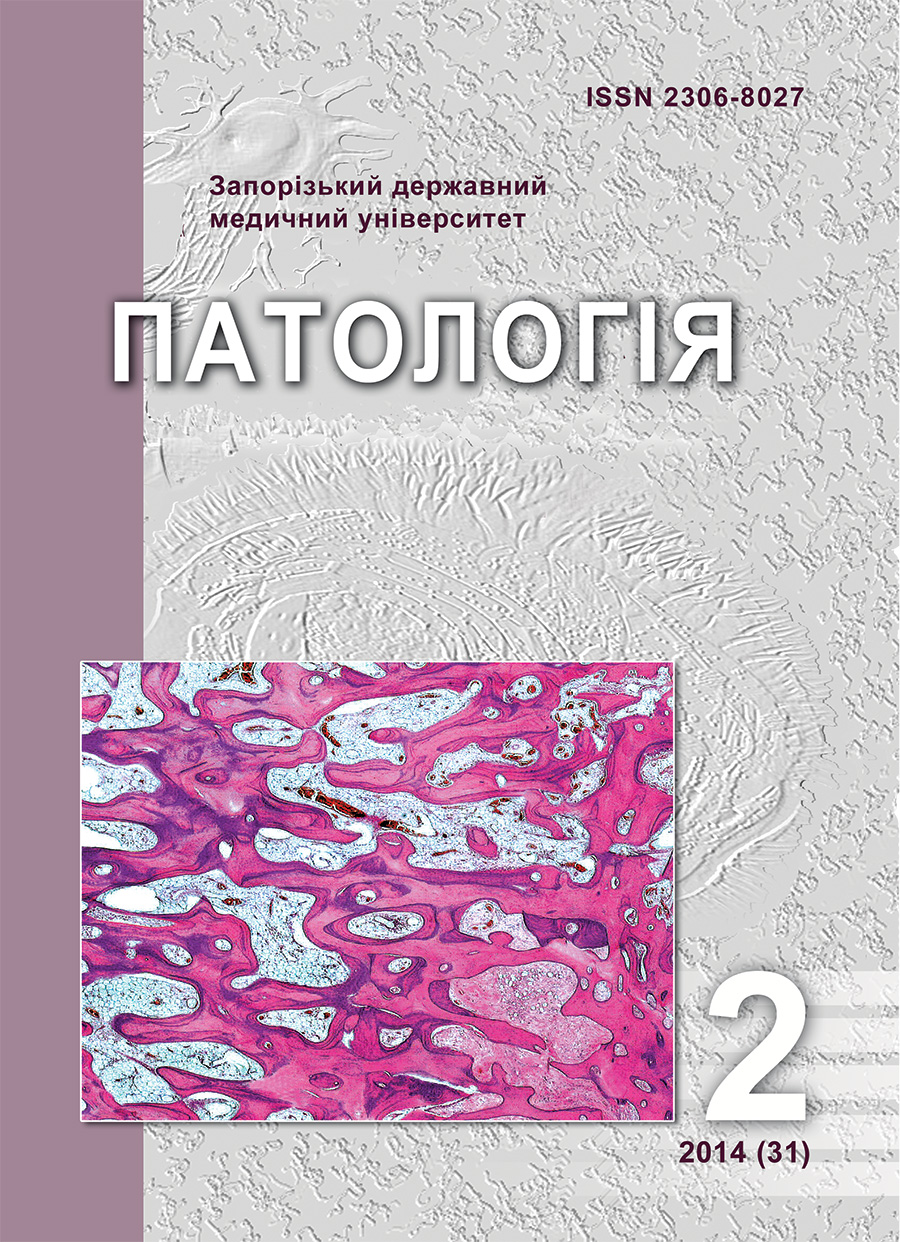Circulating VE-cadherin in patients with controlled chronic lymphocytic leukemia
DOI:
https://doi.org/10.14739/2310-1237.2014.2.28551Keywords:
VE-cadherin, Chronic Lymphocytic Leukemia, Survival, PrognosisAbstract
Aim. To evaluate the prognostic value of circulating VE-cadherin for cumulative survival in asymptomatic coronary artery disease patients with full or partial remission of limphoproliferative diseases.
Methods. One hundred twelve patients with full or partial remission of chronic lymphocytic leukemia were enrolled in the study. Observation period was up to 12 months. Blood samples for biomarkers measurements were collected. ELISA method for measurements of circulating level of VE-cadherin was used. Concentrations of VE-cadherin for cumulative survival cases due to advanced CHF were tested.
Results. One hundred three cumulative clinical events occurred in 45 patients (40.2%) within the follow-up, with their distribution being as follows: 25 deaths, 73 cardiac arrhythmias, 12 cardiac ischemic events, 2 strokes, 30 chronic heart failures and 38 hospital admissions for cardiovascular reasons. Medians of circulating levels of VE-cadherin in free-events subject cohort and subjects cohort with cardiovascular events were 0,31 ng/ml (95% confidence interval [CI] = 0,19-0,43 ng/ml) and 1,49 ng/ml (95% CI = 1,07–1,91 ng/ml) (P<0.001). In multivariate logistic regression circulating VE-cadherin independently predicted cumulative cardiovascular events (odds ratio [OR] = 1,11; 95% CI = 1,01–1,14; P = 0.001) within 12 months of observation period. However, NT-pro-BNP and Е/Em remained statistically significant predictors for cumulative cardiovascular events (OR = 1,06; 95% CI 1,03–1,14; P < 0.001 and OR = 1,05; 95% CI = 1,01 – 1,09; P<0,001), whereas T2DM, hypertension, obesity, LVEF, and multi-vessel lesion did not.
Conclusion. Among patients with documented limphoproliferative diseases and known asymptomatic coronary artery disease increased circulating VE-cadherin associates with increased cumulative cardiovascular events.
References
Cavallaro, U., Leibner, S., & Dejana, E. (2006) Endothelial cadherins and tumor angiogenesis. Exp. Cell Res., 312(5), 659–667. doi: 10.1016/j.yexcr.2005.09.019.
Vandyke, K., Chow, A. W., Williams, S. A., To, L. B., & Zannettino, A. C. (2013) Circulating N-cadherin levels are a negative prognostic indicator in patients with multiple myeloma. Br. J. Haematol., 161(4), 499–507. doi: 10.1111/bjh.12280.
Conway, D. E., Breckenridge, M. T., Hinde, E., Gratton, E., Chen, C. S., Schwartz, M. A. (2013) Fluid shear stress on endothelial cells modulates mechanical tension across VE-cadherin and PECAM-1. Curr. Biol., 23(11), 1024–1030. doi: 10.1016/j.cub.2013.04.049.
Gavard, J. (2013) Endothelial permeability and VE-cadherin: A wacky comradeship. Cell Adh. Migr., 7(6), 55–461. doi: 10.4161/cam.27330.
George, S. J., Beeching, C. A. (2006) Cadherin:catenin complex: A novel regulator of vascular smooth muscle cells behaviour. Atherosclerosis, 188(1), 1–11.
Gumbiner, B. M. (2005) Regulation of cadherin-mediated adhesion in morphogenesis. Nature Rev. Mol. Cell Biol., 6(8), 622–634. doi:10.1038/nrm1699.
Aue, G., Lozier, J. N., Tian, X., Cullinane, A. M., Soto, S., Samsel, L., et al. (2011). Inflammation, TNFα and endothelial dysfunction link lenalidomide to venous thrombosis in chronic lymphocytic leukemia. American Journal of Hematology, 86(10), 835–840. doi: 10.1002/ajh.22114.
Jang, W. J., Choi, D. Y., Jeon, I. S. (2013) Vascular endothelial dysfunction after anthracyclines treatment in children with acute lymphoblastic leukemia. Korean J. Pediatr., 56(30), 130–134. doi: 10.3345/kjp.2013.56.3.130.
Rubina, K. A., Takchuk, V. A. (2004) T-cadherin is an atypical low-density lipoprotein receptor in vascular cells. Ross. Fiziol. Zh. Im. I.M. Sechenova, 90(8), 968–986.
Wrobel, T., Mazur, G., Wolowiec, D. Jazwiec, B., Sowinska, E., Kuliczkowski, K. (2006) sVE-cadherin and sCD146 serum levels in patients with multiple myeloma. Clin. Lab. Haematol., 28(1), 36–39. doi: 10.1111/j.1365-2257.2006.00756.x.
Downloads
How to Cite
Issue
Section
License
Authors who publish with this journal agree to the following terms:
Authors retain copyright and grant the journal right of first publication with the work simultaneously licensed under a Creative Commons Attribution License that allows others to share the work with an acknowledgement of the work's authorship and initial publication in this journal.

Authors are able to enter into separate, additional contractual arrangements for the non-exclusive distribution of the journal's published version of the work (e.g., post it to an institutional repository or publish it in a book), with an acknowledgement of its initial publication in this journal.
Authors are permitted and encouraged to post their work online (e.g., in institutional repositories or on their website) prior to and during the submission process, as it can lead to productive exchanges, as well as earlier and greater citation of published work (SeeThe Effect of Open Access).

